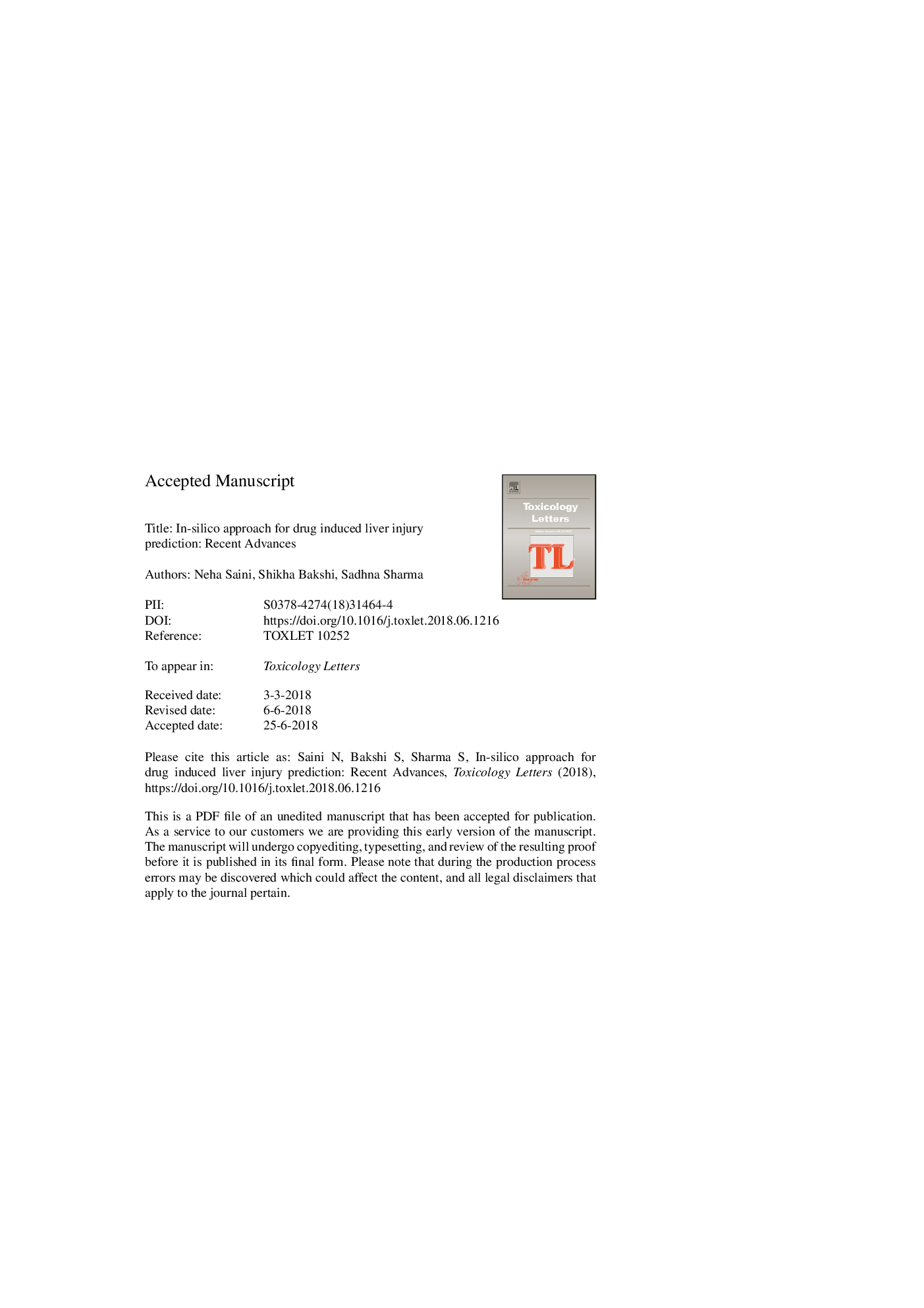| Article ID | Journal | Published Year | Pages | File Type |
|---|---|---|---|---|
| 8553125 | Toxicology Letters | 2018 | 23 Pages |
Abstract
Drug induced liver injury (DILI) is the prime cause of liver disfunction which may lead to mild non-specific symptoms to more severe signs like hepatitis, cholestasis, cirrhosis and jaundice. Not only the prescription medications, but the consumption of herbs and health supplements have also been reported to cause these adverse reactions resulting into high mortality rates and post marketing withdrawal of drugs. Due to the continuously increasing DILI incidences in recent years, robust prediction methods with high accuracy, specificity and sensitivity are of priority. Bioinformatics is the emerging field of science that has been used in the past few years to explore the mechanisms of DILI. The major emphasis of this review is the recent advances of in silico tools for the diagnostic and therapeutic interventions of DILI. These tools have been developed and widely used in the past few years for the prediction of pathways induced from both hepatotoxic as well as hepatoprotective Chinese drugs and for the identification of DILI specific biomarkers for prognostic purpose. In addition to this, advanced machine learning models have been developed for the classification of drugs into DILI causing and non-DILI causing. Moreover, development of 3 class models over 2 class offers better understanding of multi-class DILI risks and at the same time providing authentic prediction of toxicity during drug designing before clinical trials.
Keywords
QSPIPARetinoid X receptorOECDTTDBSEPPPARALTCTDPPIFXRADMECNKIRXRTBILMIEComparative Toxicogenomics DatabaseAOPLTCAFNDGGTKey eventsfarnesoid X receptorASTAspartate aminotransferaseAlanine aminotransferaseHuman leukocyte antigenHLAHITQSARBioinformaticsIngenuity Pathway AnalysisProtein-protein interactionabsorption, distribution, metabolism and excretionRandom forestDILIQuantitative structure-activity relationshipChina National Knowledge InfrastructureOrganisation for Economic Co-operation and DevelopmentQuantitative systems pharmacologyCARSupport vector machineSVMMHCmajor histocompatibility complexadverse outcome pathwayDrug induced liver injuryBiomarkerstotal bilirubinStitchGamma-glutamyl transferaseconstitutive androstane receptorperoxisome proliferator-activated receptor
Related Topics
Life Sciences
Environmental Science
Health, Toxicology and Mutagenesis
Authors
Neha Saini, Shikha Bakshi, Sadhna Sharma,
